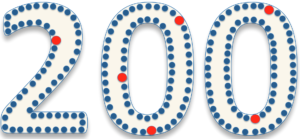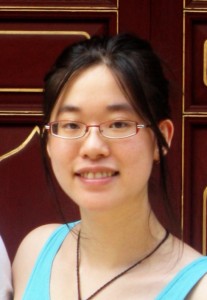6 out of 200: Stereovision
BLOG: Heidelberg Laureate Forum


Meet Pauline Tanin this short Q&A series with 6 out of 200 young researchers. A series with mathematicians and computer scientists participating at the 1st Heidelberg Laureate Forum, September 22-27, 2013.

For the first time the Heidelberg Laureate Forum will take place. About 40 Laureates (Abel Prize, Fields Medal, Nevanlinna Prize, Turing Award) will attend the forum together with 200 young researchers. For a full week Heidelberg in Germany will be the hot spot of mathematics and computer science. Six of the young scientists told us about their current research and their expectations before the meeting.
Name? My name is Pauline Tan.
Nationality? I am French.
Where are you based? I am working at Applied Mathematics Center (CMAP), at Ecole Polytechnique, Palaiseau (near Paris), France.
What is your current position? I am beginning my Ph.D. on September, 1st 2013. From February 2012 to August 2013, I was doing an internship at Center of Mathematics and their Applications (CMLA), in Cachan, France.
What is the focus of your research? I mainly work on stereovision, which estimates the 3D-shape of a scene given at least two photographs taken from different points of view. More specifically the aim of my Ph.D. is to provide a mathematical framework for optimisation-based stereo algorithms. Indeed, hundreds of methods have been proposed in twenty years. However this health of algorithms has led to a lack of formalization and of an efficient comparison of the results given by the authors (even though the Middlebury benchmark have already helped a lot). One of the many applications of stereovision lies in satellite imagery. Indeed stereovision can be used in 3D-reconstruction of landscapes or urban areas. As I worked at CMLA – that is a partner of the French space agency CNES – for the past two years, I could see how our work was used in an industrial context.
Why did you become a mathematician? It is hard to answer clearly to this question. Frankly I would say ‘by chance’. Actually the French education system is made so that a lot of students are encouraged to study mathematics and physics. That is why I came to study mathematics at Ecole Normale Supérieure de Cachan. There, thanks to my first internship at CMLA in 2010 I discovered the universe of computer vision and image analysis as well as the profession of researcher. This experience was so rewarding I decided to go on with a master’s degree in applied mathematics. I was attracted by the ability of mathematics to model tasks and processes naturally solved by humans’ eyes (or brain actually). Although those tasks seem to be solved without effort by our brain, they are actually hard to deal with for a computer. Technology constraints such as computation speed forces us to find smart models, which is really challenging.
What about your life beyond research? Beyond research, I love creative activities, especially drawing and painting. I am also highly interested in physical cosmology, but only as a non-expert.
Why did you apply for the HLF13? I applied for the HLF13 because it is a great opportunity to attend an international meeting. The purpose of the HLF13 is of course very attractive, considering the lecturers and the audience. Also I was really interested in the fact that the meeting gathers both mathematicians and computer scientists, as I am working on computer vision, a field which heavily relies on computer science advances.
What do you expect from this meeting? I hope that the Laureates who are attending the meeting will share their experience and give some advise. It will also be a good opportunity to learn about how research is conducted abroad, especially in the event that one should collaborate with researchers from other countries.
Do you have any Laureates on your list, you would love to talk to? It would be an honour to talk to David Mumford, since he was the very first researcher who I was told during my first internship. It would be very symbolic to me.

